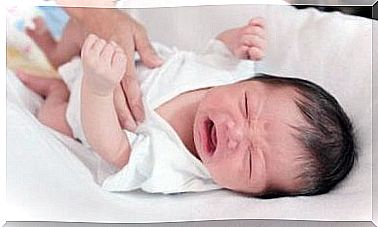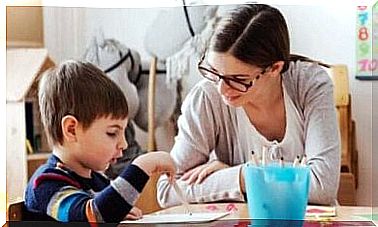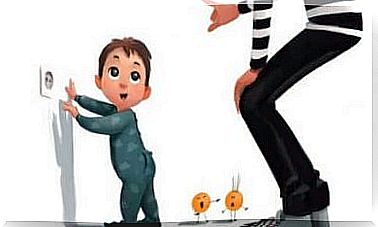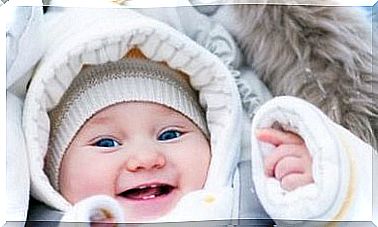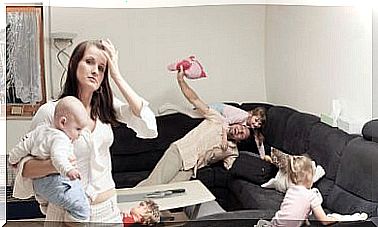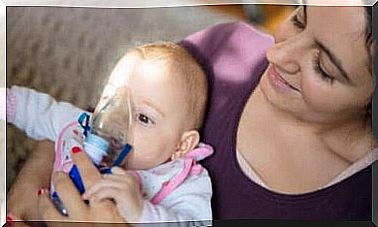Stimulate Your Baby By Playing With Him

We all learn by playing. Ultimately, games are the best way to acquire knowledge and develop skills in different areas. So play with your baby! Stimulate your baby by playing with him!
In this article we will give some tips on the best way to play with your baby. The starting point is always the age of your baby.
Many people find it unbelievable that children can learn so much and develop so well through play. Children learn and develop through play in the same way that they can learn new languages through songs, for example.
Through play activities, children can learn to communicate with the people around them. Playing with your child is just as important as talking to them or taking care of their health and nutrition .
According to The Parent’s Guide, published by the Spanish Association of Pediatrics, there are certain activities and games in a child’s early years of life that can promote their learning.
These activities stimulate their curiosity and develop their psychomotor skills.
Pediatricians emphasize the physical, intellectual, social, and emotional benefits of adequate and proper stimulation. All these activities should be performed as if they were games and the child should never be forced to play.
However, don’t overdo it. A few minutes a day is enough to do most of the games and activities that we will share with you below.
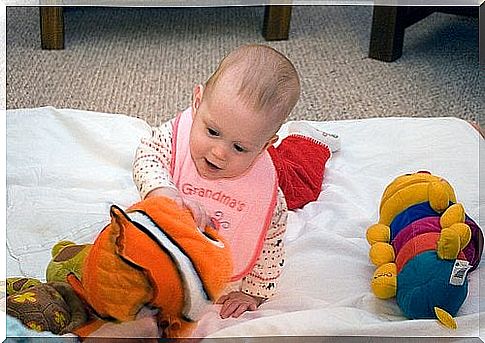
Games by age
The Parent’s Guide categorizes the games and ways to stimulate your baby according to their age.
- For example, during the first three months, you can lay the baby on its back. You can then display brightly colored toys and move them from one side to the other.
- You can also talk, smile, sing and make all kinds of noises while looking straight at him .
- Put your finger in the palm of his hand and move his arms and body from side to side. You can also stretch his legs by gently pulling on his ankles.
- When he is on his stomach, you can hold objects in front of his face. Move the object and raise it once you have his attention.
Movement and color
At the age of three to six months, we can continue with the games we played in the previous phase. In addition, you can blow kisses, stick out your tongue and make sounds that attract his attention.
- You can also play with him by holding his hands together and against each other.
- Another game is to gently pull him up to an almost sitting position by gently pulling on the forearms.
- Beneficial results can also be achieved by applying a little pressure to the soles of the feet. This will help your baby stretch his legs.
- Put an object in his hands. If he can hold it, you can take it away and repeat the whole thing.
Between 6 and 9 months
- Between six and nine months, we can show him objects with bright colors, which also make sounds. He will follow the object with his gaze. You can bring the object close to him and hold it further away. This activity must also be repeated.
- Show him a mirror so he can look at himself while you repeat his name. You can also cover his face with a tissue and wait for him to pull it off on his own. If he does, call him by name.
- Speaking with gestures and repeating syllables is also a good way to stimulate your child during this phase. You see: it doesn’t have to be an elaborate and complicated game. You can easily explain to him what you are doing when you are together.
- Give him an object in each hand and encourage him to put the objects together.
- You can also make him aware of his feet by putting on a pair of flashy socks.
- Encourage exercise, especially turning over, by lying down next to him and calling him by name.

Play and recognize
According to psychologist Rosa Jove, spontaneous and creative play is much more effective when done with everyday objects. Because of this, the child builds things with his imagination.
This will challenge him to explore and discover new possibilities. He also learns the use and dimensions of objects.
- Between the ages of nine and twelve months you can already show him children’s books with animals. Of course it becomes even more fun if you imitate the animal sounds.
- Another simple game is to encourage him to touch different materials.
- You can also stimulate him by changing your facial expression, making noises with your lips, giving kisses, wrapping toys and waiting for them to unpack, etc.
- It’s also a good idea to give him cubes of different sizes that he can play with.
- Help him stand or walk by holding him under his arms or by his hands. This will help him develop his motor skills.
Between 12 and 15 months
- If your baby is between 12 and 15 months old, you can help him walk and climb the stairs by holding his hands.
- Teach him to put objects in containers, build towers with cubes, turn pages, hold spoons, drink from a cup and open and close boxes.
- You can now also teach him to discover his body. By showing him a picture of himself or holding up a mirror to him, we can help stimulate memory and other cognitive processes.
- At this stage , we should ask him to help undress. We can also let him eat on his own and ask him to do small tasks like tackling things.
After 18 months it is very good to help him go up and down stairs. You can also give him a ball to kick. Looking at pictures together in books is very important for language development.
You should now also start talking to him using simple sentences. Hide toys in the house for them to find later.
